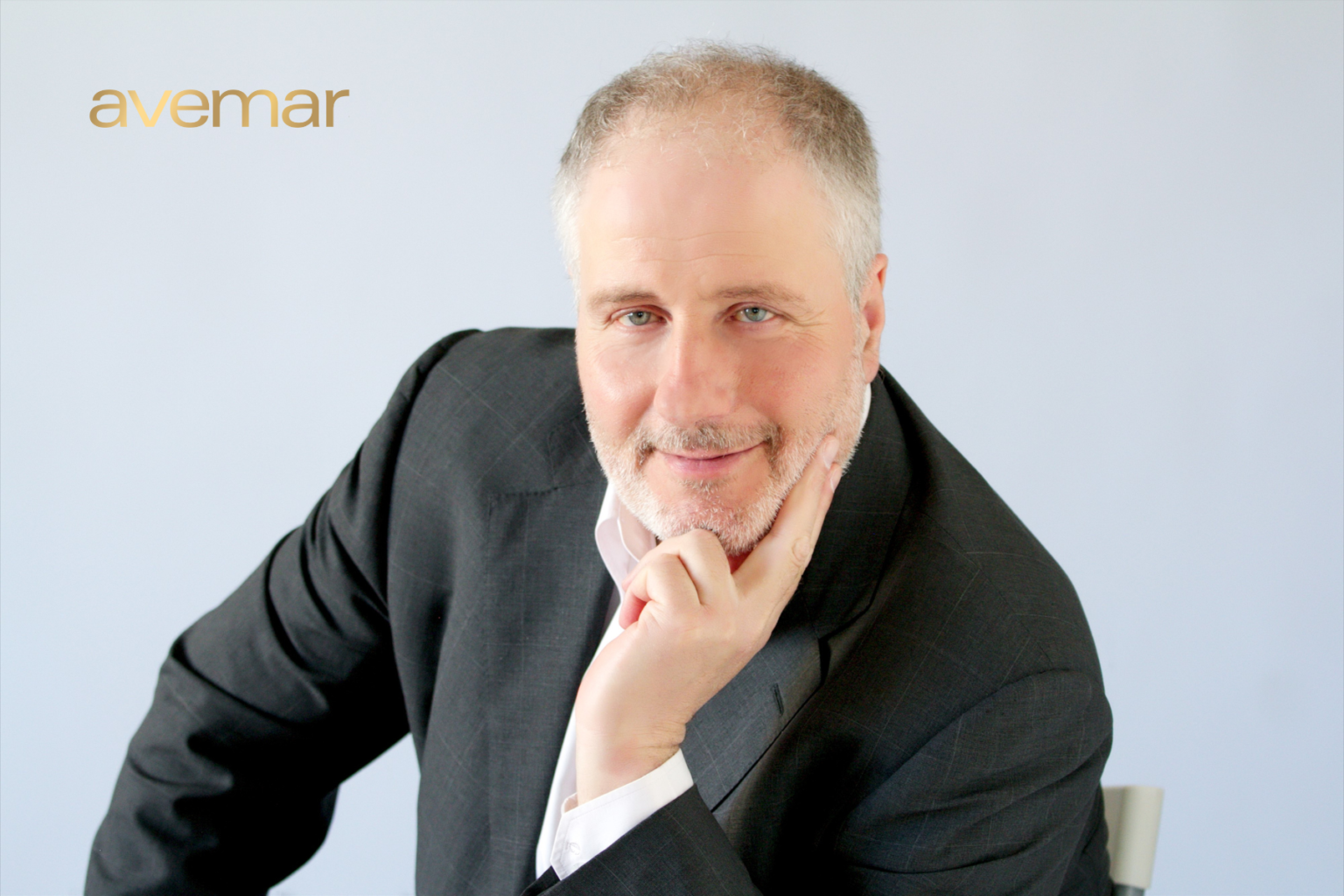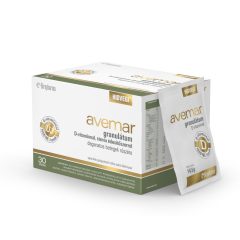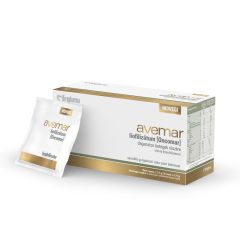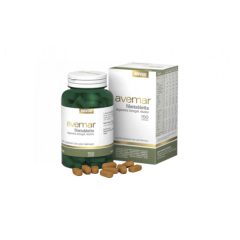When we think of the achievements of Hungarians in medicine and health, perhaps the first person who comes to mind is Albert Szent-Györgyi, the discoverer of vitamin C. It was his work that led to the development of a Hungarian invention containing a special fermented wheat germ extract used by cancer patients, now known as Avemar, which has gained international recognition, so much so that in America it is mostly known as Hungarian powder.
The history of the fermented wheat germ extract dates back to the early 1990s, when it was first produced by Máté Hidvégi, a cancer researcher and biological engineer, who was awarded the Presidential Gold Medal and the National Intellectual Property Office's Ányos Jellyfish Prize for his development of Avemar. The first can of Avemar was imported into Hungary from Israel, and it was with their technological assistance that the product was made. We also asked Professor Hidvégi about the history of the development of the product, i.e. the past and the latest research results, the present and the future.
"The idea, or should I call it the guideline, came from Albert Szent-Györgyi's theory of cancer. I had the opportunity to meet Szent-Györgyi in person in 1978, and I have a dedication from him. During his time in Szeged, he maintained a close friendship with Lajos Dávid, a professor of pharmacy who had moved from Cluj-Napoca to Szeged. My "letter of recommendation" to him was that Lajos Dávid was my grandfather. Szent-Györgyi was always interested in cancer research. I have in my possession a letter he wrote in German shortly before he won the Nobel Prize, in which he says that he was interested in cancer research in addition to biological oxidation and would like to do so. Szent-Györgyi developed his cancer theory in the last decade of his career. According to the latter, our cells are considered healthy if the proteins in them are electrically conductive. If the proteins lose their conductivity, the cell loses the ability to differentiate and becomes a tumour cell. Whether or not the cell's proteins are electrically conductive will be determined by the oxygen molecules in the atmosphere. An oxygen molecule has two unpaired electrons. The energy of oxygen depends on their state. The biological oxidation that takes place in our cells and tissues, which is essential for life, requires oxygen of maximum energy. But oxygen in the atmosphere is not like this, because if it were at maximum energy, we would certainly die if we breathed it in.
Szent-Györgyi managed to resolve this apparent contradiction, and this solution gave the essence of his theory of cancer. In biological oxidation, oxygen is converted to maximum energy, but this enormous oxidation energy is immediately used up by the interposition of a quinone (a small organic molecule) and does not damage the cell. With his famous intuition, Szent-Györgyi discovered that the universal quinone of biological oxidation in humans is the methoxy and dimethoxy hydroquinone, which activate atmospheric oxygen, while the dimethoxy molecule attaches itself to proteins and converts their chemical bonds into electrically conducting ones. By this mechanism, biological oxidation not only provides the energy required for cell metabolism, but also maintains the electrical conductance of proteins, cell differentiation and healthy metabolism. The main implication of Szent-Györgyi's cancer theory is that the lack of methoxy and dimethoxy hydroquinones leads to the breakdown of biological oxidation and ultimately to cancerous degeneration. Shortly before his death, Szent-Györgyi himself, and after his death his colleagues, carried out in vitro studies and laboratory animal experiments to prove the anti-cancer effects of methoxy hydroquinones. Seeing these results, I simply believed Szent-Györgyi's theory. And I must say that this belief became the most important choice of my scientific career.
I am a student of Pál Juhász-Nagy. He was "one of the intellectual luminaries" (György Bárdos' phrase) of ELTE. The story of a plant propagule, for example, whether a seed germinates; if so, whether the plant sprouts, with roots, shoots; if it does, whether it takes root in the right soil; if so, whether the environmental conditions are suitable for it to grow and bear fruit, etc., that is, this story, in other words, the fate of this propagule is a sequence of choices. Choice sequences can be represented and modelled by graphs, for example. Note that human fate is also a sequence of choices: school, education, career, choice of partner or spouse; we often choose our illness (e.g. lifestyle, nutrition, etc.) and sometimes our death (e.g. suicide, refusal of vaccinations, etc.). The principle of fate as a sequence of choices is applied in Lipót Szondi's analysis of fate.
Going back to Szent-Györgyi, the most abundant natural source of these particular quinones, believe it or not, is wheat. Wheat, our bread grain, is a grass. Its fruit, the grain of wheat, consists of three anatomically distinct parts: bran, germ, kernel. When ground, the latter produces the flour. The bran and wheat germ are used as fodder. In other words, we humans eat the not very valuable kernel insides and are altruistic enough to give the valuable bran and the even more valuable germ to pigs and poultry. The milling germ fraction of the wheat grain contains the oil and, by definition, the fat-soluble molecules, including methoxy hydroquinones. The latter are not present in free form but bound to sugars as glycosides. Yeast is a very good source of glycosidase. The glycosidase enzymes release the methoxyhydroquinones of the wheat germ by cleaving the glycosidic bonds. Starting from this simple idea, years of biotechnological experiments, some of which I carried out with my student at the University of Graz, led me to the definition of the production technology of Avemar, a fermented wheat germ extract.
But I must tell you an important story from earlier. After Szent-Györgyi's death (1986), his laboratory in Woods Hole, which was at the Institute of Oceanography, was abandoned. Someone wanted to rent out the whole floor, so they started to demolish the former Szent-Györgyi lab. My professional mentor, Gábor Fodor, a professor of organic chemistry at West Virginia University, knew I wanted to do wheat germ research and asked his former assistant at Szent-Györgyi, Jane McLaughlin, to send me the quinone materials to Budapest instead of throwing them away. That is how I got part of Albert Szent-Györgyi's cancer research legacy, and I still have his hand-marked chemical vials. At the time, I was an associate professor at the Faculty of Chemical Engineering at the Budapest University of Technology. I had a PhD student, Rita Tömösköziné Farkas, who did her thesis with me. I wanted her to write her PhD thesis on the research of fermented wheat germ extract. Due to financial constraints, the Faculty of Chemical Engineering was unable to pay my PhD student's stipend of 12,000 forints a month, which was not much at the time. I used my own money and later my parents' money to pay for the research. I called Gabor Fodor to see if he could help me find a properly equipped laboratory where Rita and I could work on a courtesy basis. That's how we ended up in Graz, in the biochemistry department of the University of Graz, in the laboratory of Professor Hermann Esterbauer, where we were able to carry out our biotechnology experiments. Esterbauer was one of the greatest men I have ever met in my career. It is interesting how much support I received from the greatest scientists! As an example, in our development of the high performance liquid chromatography (HPLC) method, we had the help of none other than Csaba Horváth, chemical engineer and inventor of HPLC. The experiments in Graz were carried out in true independent tranquillity. I am now convinced that independent calm is a prerequisite for scientific creativity, and indeed for all creative work. János Arany did not want anything else.
I visited the Weizmann Institute in Rehovot, Israel, a few times. On one occasion I visited immunologist János Gergely, who was on sabbatical. It was then that I got a taste of institutionalised independent tranquillity. For that was what Weizmann was all about. The researchers lived inside the institute, in functional and comfortable single houses in a grove-like area, under the quiet, constant murmur of evergreen eucalyptus trees. They did their research as they pleased, their hobby was their work, no one bossed them around. I'm speaking in the past tense, because I don't know if that's still the case today.
The industrial-scale production of fermented wheat germ extract was carried out at the pharmaceutical (GMP) certified plant of Biropharma Ltd. in Kunfehérto, with our colleagues László Nagypál and Klára Déri. I considered it important that the product be manufactured in a pharmaceutical factory certified facility, because the formulation must be consistent from batch to batch, year after year, and must contain a constant amount of methoxy and dimethoxy hydroquinones, and although it also contains hundreds of other molecules, most of which are not known by formula, their presence and fixed concentration ratios are essential for the effect.
The next phase of the research work was carried out at the Institute of Pathology and Experimental Cancer Research No. I am talking about nearly a hundred animal experiments, years of work. Among the colleagues involved in these were Béla Szende, an encyclopaedic histologist and then director of the Institute, Erzsébet Rásó, an internationally renowned researcher and one of the leading lights in experimental cancer research, and Károly Lapis, a medical academic whose photograph was on the cover of the journal of the US National Cancer Research Center in Rockville. Already at the end of the first year of research (1995), it was found that fermented wheat germ extract was non-toxic, but also immunostimulant and reduced tumour progression, i.e. the formation of tumour metastases. I was able to find investors in Mihály Kupa and András Rózsa, and later in Ákos Resetár, because needless to say, by then all my money had run out, although there was still a lot of work to be done. Our scientific publications on the research have been published continuously since the second half of the 1990s.
I read in Albert Szent-Györgyi that when he produced vitamin C, he sent it out into the world for others to test and give their scientific opinion. I adopted this method from him because I thought that I would not be able to afford the leading researchers and institutions in the field, but that there might be scientists who would be interested in this exciting material and ground-breaking subject out of scientific curiosity. All I ask is that you publish your results. Good or bad, whatever you find. Parenthetical: of course science does not know the word wrong. Science, if it is true (if it is not true, it is not science), is always good. It cannot be otherwise, because every scientific experiment, every honest measurement, makes the world a better place. One after another, the feedback came in. Australian researchers have found that the compound also appears to be beneficial in treating a group of diseases known as metabolic syndrome. On the basis of experiments carried out in Los Angeles and Barcelona, Professor László Boros and his colleagues announced in the elite journal Nature Biotechnology as early as 2002 that the preparation I sent them would be of great value in the treatment of cancer patients. It is not appropriate to boast of names, and I will not go on.
For now, I will only mention foreign countries where the fermented wheat germ extract I developed has been tested and the results published: England, USA (California, Arizona, New York, Texas, Maryland, Ohio, Washington DC, Florida), Israel, Austria, Australia, Philippines, Vietnam, South Korea, Russia, Canada, Switzerland, Germany, Slovakia, Czech Republic, China, Japan, Taiwan, Turkey, Greece, Netherlands, Spain, Italy.
Here at home, we have concluded with the above-mentioned scientists at the SOTE that the fermented wheat germ extract should be made available to those in need as soon as possible. The second phase of production took place in Israel, from where the product first arrived in Hungary. At that time it was still a dietary supplement. We were approached by clinicians from Hungary and abroad who wanted to test the efficacy of the product in patients according to an approved protocol. Avemar was the only non-pharmaceutical product to have been tested in approved clinical trials in Hungary and abroad in people with cancer and autoimmune diseases. Based on the results of the clinical trials, with the prior approval of Sándor Eckhardt, an oncologist and academic, Avemar was registered as a nutritional product for cancer patients in 2002, on the recommendation of the National Institute of Oncology, and published in the Health Gazette."
The Hungarian product is now widely used all over the world. Can you tell us about the latest research on fermented wheat germ extract?
"There have been several publications on fermented wheat germ extract in recent years. First I will mention a clinical study. The largest medical institution in the Middle East and one of the "TOP 10" hospitals in the world is the Sheba Medical Centre in Israel. In the oncology department of the hospital, which is an entire building, the effect of a fermented wheat germ extract produced in Hungary was studied in patients with advanced prostate cancer. In a paper published in the journal Nutrition and Cancer, the clinicians recommend the use of the preparation in this important and unfortunately common type of disease. This article fits in nicely with the many clinical publications on Avemar published in previous years.
Albert Szent-Györgyi and another research giant, Otto Warburg, were the first to say that the malfunctioning of the biological oxidation process and the functional damage to the cellular mitochondria, the energy centre of the cell, where cellular respiration takes place, is the cause of cancer. A major research paper on fermented wheat germ extract, recently published in one of the top scientific journals, Scientific Reports (Nature), provides evidence that the active ingredients in the preparation can repair damaged mitochondria in cancer cells, and thus eliminate the cause of cancer at the subcellular level. This is an exciting result, and one of the authors of the paper is the Nobel laureate James D. Watson, after whom, with Francis Crick, the DNA molecule was named the Watson and Crick double helix.
A small publication on the antiviral effects of fermented wheat germ extract has already been published and a large research article is in press. It is not about the coronavirus, but about a new way to cure cells infected with the virus that causes the acquired immunodeficiency syndrome. But that's something for another time.
Finally, speaking of viruses, I would like to mention that the main researcher on coronavirus in Germany, Christian Drosten, has written several papers on the potential of substances that trigger cellular self-cleaning processes, the so-called autophagy inducers, as potential antiviral agents against coronavirus. Five years ago, researchers at the University of Würzburg Clinical Centre published that fermented wheat germ extract is an autophagy inducer. I have a feeling, although I have not yet been able to prove it, that Avemar will also be an effective helper in the fight against coronavirus."
























